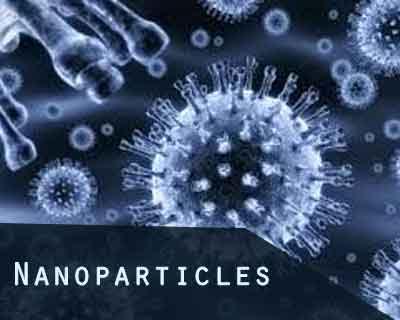- Home
- Editorial
- News
- Practice Guidelines
- Anesthesiology Guidelines
- Cancer Guidelines
- Cardiac Sciences Guidelines
- Critical Care Guidelines
- Dentistry Guidelines
- Dermatology Guidelines
- Diabetes and Endo Guidelines
- Diagnostics Guidelines
- ENT Guidelines
- Featured Practice Guidelines
- Gastroenterology Guidelines
- Geriatrics Guidelines
- Medicine Guidelines
- Nephrology Guidelines
- Neurosciences Guidelines
- Obs and Gynae Guidelines
- Ophthalmology Guidelines
- Orthopaedics Guidelines
- Paediatrics Guidelines
- Psychiatry Guidelines
- Pulmonology Guidelines
- Radiology Guidelines
- Surgery Guidelines
- Urology Guidelines
Antioxidants effective against sepsis: Study

During sepsis, cells are swamped with reactive oxygen species generated in an aberrant response of the immune system to a local infection. If this fatal inflammatory path could be interfered, new treatment schemes could be developed. Now, Korean scientists report in the journal Angewandte Chemie that zirconia-doped ceria nanoparticles act as effective scavengers of these oxygen radicals, promoting a greatly enhanced surviving rate in sepsis model organisms.
Sepsis proceeds as a vicious cycle of inflammatory reactions of the immune system to a local infection. Fatal consequences can be falling blood pressure and the collapse of organ function. As resistance against antibiotics is growing, scientists turn to the inflammatory pathway as an alternative target for new treatment strategies. Taeghwan Heyon from Seoul National University, Seung-Hoon Lee at Seoul National University Hospital, South Korea, and collaborators explore ceria nanoparticles for their ability to scavenge reactive oxygen species, which play a key role in the inflammatory process. By quickly converting between two oxidation states, the cerium ion can quench typical oxygen radical species like the superoxide anion, the hydroxyl radical anion, or even hydrogen peroxide. But in the living cell, this can only happen if two conditions are met.
The first condition is the size and nature of the particles. Small, two-nanometer-sized particles were coated by a hydrophilic shell of poly(ethylene glycol)-connected phospholipids to make them soluble so that they can enter the cell and remain there. Second, the cerium ion responsible for the quenching (Ce(3+)) should be accessible on the surface of the nanoparticles, and it must be regenerated after the reactions. Here, the scientists found out that a certain amount of zirconium ions in the structure helped, because "the Zr(4+) ions control the Ce(3+)-to-Ce(4+) ratio as well as the rate of conversion between the two oxidation states," they argued.
The prepared nanoparticles were then tested for their ability to detoxify reactive oxygen species, not only in the test tube, but also in live animal models. The results were clear, as the authors stated: "A single dose of ceria-zirconia nanoparticles successfully attenuated the vicious cycle of inflammatory responses in two sepsis models." The nanoparticles accumulated in organs where severe immune responses occurred, and they were successful in the eradication of reactive oxygen species, as evidenced with fluorescence microscopy and several other techniques. And importantly, the treated mice and rats had a far higher survival rate.
This work demonstrates that other approaches in sepsis treatment than killing bacteria with antibiotics are possible. Targeting the inflammatory signal pathways in macrophages is a very promising option, and the authors have shown that effective scavenging of reactive oxygen species and stopping inflammation is possible with a suitably designed chemical system like this cerium ion redox system provided by nanoparticles.
To read the full article click on the following link : doi: 10.1002/anie.201704904

Disclaimer: This site is primarily intended for healthcare professionals. Any content/information on this website does not replace the advice of medical and/or health professionals and should not be construed as medical/diagnostic advice/endorsement or prescription. Use of this site is subject to our terms of use, privacy policy, advertisement policy. © 2020 Minerva Medical Treatment Pvt Ltd